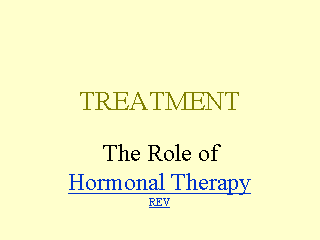Search inside of Supercourse and lectures in HTML and PPT format
 |
|

|
front |1 |2 |3 |4 |5 |6 |7 |8 |9 |10 |11 |12 |13 |14 |15 |16 |17 |18 |19 |20 |21 |22 |23 |24 |25 |26 |27 |28 |29 |30 |31 |review |
 Tumors arising from the breast, prostate, and uterine endometrium may respond to hormonal manipulation of underlying cellular growth control mechanisms. Steroid hormones bind to specific receptors in the tumor cell cytoplasm; the hormone-receptor complex is then transported to the cell nucleus, where it interacts with cellular DNA, acting as a transcription factor to initiate specific messenger RNA and protein synthesis. A discussion of hormonal therapies requires consideration of the following: Estrogen therapy and the role of estrogens and progesterone receptors Anti-estrogens such as Tamoxifen Ablation of endocrine organs: ovariectomy, adrenalectomy, hypophysectomy, orchiectomy; medical adrenalectomy with aromatase inhibitors
|